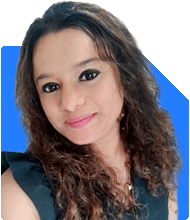Sir..I am 38 yrs. old & want to invest 10 lacs in mutual funds for 2 yrs. In 2026 I want the amount for the higher education of my 2 kids.I want to invest the said amount in different funds so that by that time it grows by 12 to 15% Pls. suggest what I do to attain that goal
Ans: As a Certified Financial Planner (CFP), I understand the importance of your goals and the need to secure a good education for your children. Let's dive into how you can achieve this.
Assessing Your Investment Horizon and Goals
You have a clear goal: investing Rs 10 lacs for your children's higher education in 2026. The timeframe is relatively short, only two years. With this in mind, it's crucial to understand the risk involved in different types of investments.
Investing in mutual funds can provide growth, but the short duration requires a strategic approach. Higher returns typically come with higher risks, which might not be suitable for your short-term goal.
Risk Assessment and Time Frame Considerations
For a two-year investment period, risk management becomes paramount. Equity mutual funds, while offering higher returns over the long term, can be volatile in the short term. The market fluctuations might not align with your investment horizon. Hence, balancing risk and return is key.
Debt funds, on the other hand, offer more stability and lower returns. Considering your goal of achieving a 12-15% return, we need a blend of funds that can potentially meet your expectations while minimizing risk.
Diversification for Stability and Growth
Diversifying your investments can help manage risk better. By spreading your Rs 10 lacs across different types of funds, you can achieve a balanced portfolio. Let's explore the categories:
Short-term Debt Funds: These funds invest in securities with shorter durations. They offer stability and better returns than traditional savings accounts or fixed deposits.
Hybrid Funds: These funds combine equity and debt investments. They provide a balance of growth and stability, which is crucial for your two-year horizon.
Actively Managed Funds: These funds involve professional fund managers actively making investment decisions to outperform the market. Although they come with higher fees, they have the potential to provide better returns than index funds.
Understanding the Disadvantages of Index Funds
While index funds are popular for long-term investments due to their low costs, they might not be the best option for your two-year goal. Index funds track the market, which can be volatile in the short term. Actively managed funds, although costlier, can navigate market fluctuations better and potentially offer higher returns.
Benefits of Regular Funds Through an MFD with CFP Credential
Investing through a Mutual Fund Distributor (MFD) who is also a CFP can be advantageous. They provide personalized advice, helping you choose the right mix of funds. They also assist in managing your portfolio actively, ensuring it aligns with your goals.
Regular funds, managed by professionals, can adapt to market conditions, potentially offering better returns than direct funds. This guidance is especially valuable given your short investment horizon.
Investment Strategy: A Detailed Plan
Here’s a suggested investment strategy:
Allocate 40% to Short-term Debt Funds: These funds offer stability and decent returns, minimizing the risk of capital loss. This portion ensures that a significant part of your investment remains secure.
Allocate 30% to Hybrid Funds: These funds balance equity and debt, providing moderate growth potential with controlled risk. They can offer better returns than pure debt funds while maintaining some stability.
Allocate 30% to Actively Managed Equity Funds: Although riskier, these funds can provide the growth needed to achieve your target returns. The active management aspect aims to outperform the market and mitigate risks.
Monitoring and Rebalancing
Regular monitoring of your investments is crucial, especially with a short-term goal. Market conditions can change, affecting your portfolio's performance. Rebalancing ensures your investments stay aligned with your goals.
Potential Risks and Mitigation
Investing always involves risks. Market volatility, economic changes, and interest rate fluctuations can impact returns. However, a well-diversified portfolio mitigates these risks. By combining debt, hybrid, and equity funds, you can achieve a balanced approach.
Tax Considerations
Mutual fund investments come with tax implications. Short-term capital gains tax (STCG) applies to equity funds held for less than a year. For debt funds, holding them for over three years can provide indexation benefits, reducing tax liability. However, given your two-year horizon, STCG might apply.
Empathy and Understanding Your Concerns
I understand your concern for your children's future and the importance of making the right investment decisions. Education is a significant milestone, and ensuring you have the necessary funds is crucial. Your proactive approach to planning is commendable.
Genuine Compliments
Your dedication to securing your children's education shows your commitment and foresight. Taking the time to plan your investments reflects a responsible and thoughtful approach to financial planning.
Final Insights
Investing Rs 10 lacs for your children's education in 2026 requires a careful balance of risk and return. By diversifying your investments across short-term debt, hybrid, and actively managed equity funds, you can achieve your goal while managing risks. Regular monitoring and rebalancing are essential to stay on track.
Working with a Certified Financial Planner can provide you with personalized advice and professional management, ensuring your investments align with your objectives. Your commitment to planning for your children's future is admirable, and with the right strategy, you can achieve your financial goals.
Best Regards,
K. Ramalingam, MBA, CFP,
Chief Financial Planner,
www.holisticinvestment.in

























